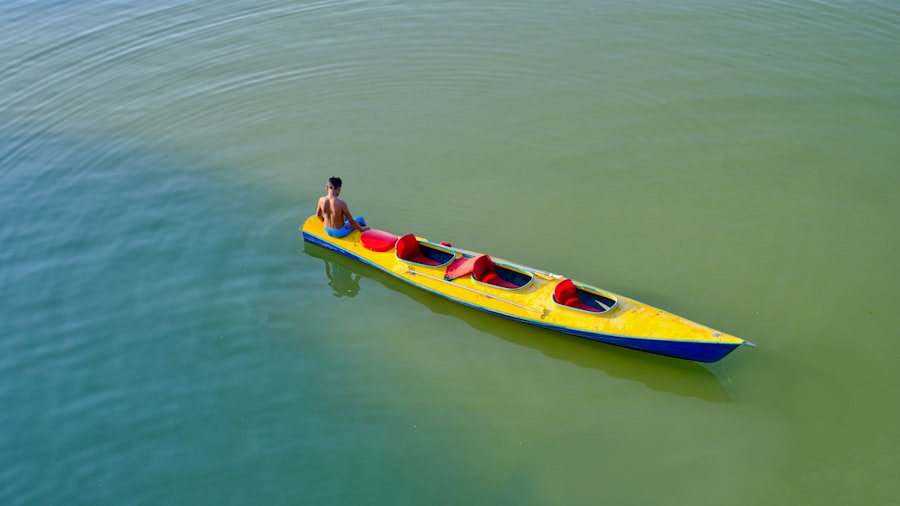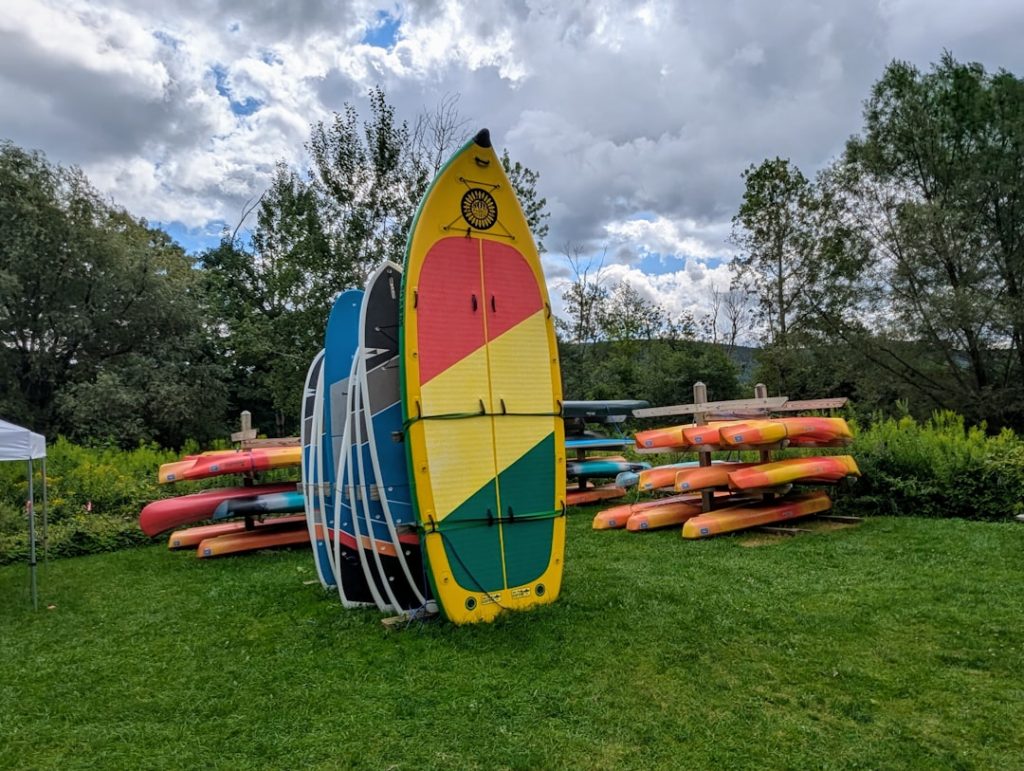Purchasing a used kayak can be an excellent decision for both novice paddlers and seasoned adventurers alike. One of the most significant advantages is the cost savings associated with buying pre-owned equipment. New kayaks can be quite expensive, often ranging from several hundred to several thousand dollars, depending on the type and brand.
By opting for a used kayak, buyers can often find high-quality models at a fraction of the original price, allowing them to allocate their budget toward other essential gear or experiences, such as paddling accessories or travel expenses for kayaking trips. In addition to financial benefits, buying a used kayak can also contribute to environmental sustainability. The outdoor recreation industry has increasingly recognized the importance of reducing waste and promoting eco-friendly practices.
By choosing a second-hand kayak, you are extending the life of a product that might otherwise end up in a landfill. This choice not only minimizes your carbon footprint but also supports a culture of reusing and recycling within the outdoor community. Furthermore, many used kayaks come with character and history, which can add to the overall experience of ownership, as each vessel carries its own unique story.
Key Takeaways
- Buying a used kayak offers cost savings and access to quality gear.
- Assessing a used kayak’s condition involves checking for damage and wear.
- High-quality used kayaks can be found through specialized retailers and online marketplaces.
- Choosing the right kayak depends on your specific needs and intended use.
- Proper maintenance and safety checks ensure a reliable and enjoyable kayaking experience.
How to Assess the Quality of a Used Kayak
When evaluating the quality of a used kayak, it is essential to conduct a thorough inspection to ensure that it meets your needs and is safe for use. Start by examining the hull for any signs of damage, such as cracks, deep scratches, or punctures. A kayak with a compromised hull can lead to leaks and safety issues on the water.
Pay particular attention to the areas around the cockpit and any hatches, as these are common points of wear and tear. If possible, perform a water test by filling the kayak with water to check for leaks; this can provide peace of mind before making a purchase. Another critical aspect to consider is the kayak’s overall structure and components.
Inspect the bulkheads, footrests, and seat for any signs of wear or damage. Ensure that all hardware, such as screws and fittings, are intact and functioning correctly. Additionally, check the condition of any accessories that may come with the kayak, such as paddles, life jackets, or spray skirts.
These items can significantly enhance your kayaking experience, so their condition should be factored into your assessment. If you are unsure about any aspect of the kayak’s quality, consider consulting with an experienced paddler or a local kayak shop for guidance.
Where to Find High-Quality Used Kayaks for Sale

Finding high-quality used kayaks requires some research and exploration of various avenues. One of the most popular places to start is online marketplaces such as Craigslist, Facebook Marketplace, or specialized outdoor gear websites like Paddling.com or REI’s used gear section. These platforms often feature listings from individuals looking to sell their kayaks at competitive prices.
When browsing these sites, be sure to filter your search based on your specific needs, such as kayak type, size, and price range. Local outdoor retailers and specialty kayak shops can also be excellent resources for finding used kayaks. Many shops offer trade-in programs or consignment sales where customers can sell their gently used kayaks.
Visiting these stores not only allows you to inspect the kayaks in person but also provides an opportunity to speak with knowledgeable staff who can offer valuable insights and recommendations based on your skill level and intended use. Additionally, local paddling clubs or community groups often have bulletin boards or online forums where members post listings for used kayaks for sale, creating a sense of camaraderie among enthusiasts.
Tips for Choosing the Right Used Kayak for Your Needs
| Tip | Description | Key Metric | Recommended Value |
|---|---|---|---|
| Determine Kayak Type | Choose based on intended use: recreational, touring, fishing, or whitewater. | Kayak Type | Recreational for casual use; Touring for long distances; Fishing for stability |
| Check Kayak Length | Length affects speed and maneuverability. | Length (feet) | 9-12 ft for recreational; 12-16 ft for touring |
| Assess Kayak Width | Wider kayaks offer more stability; narrower kayaks are faster. | Width (inches) | 24-28 inches for stability; 20-24 inches for speed |
| Check Weight Capacity | Ensure kayak can support your weight plus gear. | Weight Capacity (lbs) | At least 50 lbs above your combined weight and gear |
| Inspect Material | Material affects durability and weight. | Material Type | Polyethylene for durability; Composite for lightweight |
| Evaluate Condition | Look for cracks, leaks, and wear on used kayaks. | Condition Rating | Good to excellent with no major damage |
| Consider Storage and Transport | Check if kayak fits your storage space and transport method. | Dimensions & Weight | Fits in vehicle and storage area comfortably |
| Test Paddle Compatibility | Ensure kayak suits your paddle type and length. | Paddle Length (inches) | 210-240 inches depending on kayak width and user height |
Selecting the right used kayak involves understanding your specific needs and preferences as a paddler. First and foremost, consider the type of kayaking you plan to do—whether it’s recreational paddling on calm lakes, whitewater kayaking in rivers, or touring on open waters. Each type of kayaking requires different features in a kayak, such as stability, maneuverability, and storage capacity.
For instance, if you are primarily interested in recreational kayaking, a wider kayak with a stable hull design may be more suitable. Conversely, if you plan to embark on longer journeys or multi-day trips, a touring kayak with ample storage space and streamlined design would be more appropriate. Another crucial factor to consider is your body size and weight.
Kayaks come in various sizes and shapes designed to accommodate different paddler profiles. It is essential to choose a kayak that fits you comfortably to ensure an enjoyable experience on the water. When trying out a used kayak, pay attention to how well you fit in the cockpit and whether you can easily reach the foot pedals and controls.
Additionally, consider your skill level; if you are a beginner, opting for a more stable and forgiving design will help build your confidence as you learn the ropes.
Ensuring Safety and Reliability in a Used Kayak Purchase
Safety should always be a top priority when purchasing a used kayak. Before finalizing your purchase, verify that the kayak meets safety standards set by organizations such as the American Canoe Association (ACA) or the National Marine Manufacturers Association (NMMA). These certifications indicate that the kayak has undergone rigorous testing for performance and safety features.
Additionally, inquire about the kayak’s history—has it been involved in any accidents or sustained significant damage? Understanding its past can help you gauge its reliability. Once you’ve purchased your used kayak, it is essential to equip yourself with safety gear before heading out on the water.
This includes wearing a properly fitted personal flotation device (PFD), carrying a whistle or signaling device, and having appropriate safety equipment such as a first aid kit and a repair kit for minor issues that may arise during your adventures. Familiarizing yourself with local regulations regarding kayaking safety can also help ensure that you are well-prepared for any situation.
Proper Maintenance and Care for Your Used Kayak

Maintaining your used kayak is crucial for prolonging its lifespan and ensuring optimal performance on the water. Regular cleaning is essential; after each use, rinse off any dirt, sand, or saltwater that may have accumulated on the hull and inside the cockpit. This simple step helps prevent corrosion and degradation of materials over time.
For deeper cleaning, especially if your kayak has been exposed to algae or other organic matter, consider using mild soap and water along with a soft sponge or cloth. In addition to cleaning, periodic inspections are vital for identifying any potential issues before they become significant problems. Check for signs of wear on seals around hatches and bulkheads; these areas are prone to deterioration over time.
If you notice any cracks or damage in the hull or fittings, address them promptly with appropriate repairs or replacements. Storing your kayak properly is also essential; keep it out of direct sunlight when not in use to prevent UV damage and consider using a protective cover if storing it outdoors.
Making the Most of Your Used Kayak Adventures
Owning a used kayak opens up a world of adventure and exploration on the water. To maximize your experiences, consider joining local paddling groups or clubs that organize regular outings and events. These communities often provide opportunities to learn from experienced paddlers while also fostering friendships with fellow enthusiasts who share your passion for kayaking.
Participating in group trips can enhance your skills while allowing you to discover new waterways that you may not have explored otherwise. Additionally, take advantage of resources available online or through local libraries to expand your knowledge about kayaking techniques and safety practices. Books, instructional videos, and online courses can provide valuable insights into improving your paddling skills or learning new techniques such as rolling or navigating challenging conditions.
Engaging in workshops or clinics offered by local outfitters can also provide hands-on experience under the guidance of skilled instructors.
Finding Community and Support for Used Kayak Enthusiasts
The kayaking community is vast and welcoming, providing numerous opportunities for connection among enthusiasts who appreciate both new and used equipment. Online forums and social media groups dedicated to kayaking often feature discussions about gear recommendations, maintenance tips, and shared experiences from fellow paddlers who have purchased used kayaks. Engaging in these platforms allows you to ask questions, share your own insights, and learn from others who have navigated similar challenges.
Local meetups organized by paddling clubs or outdoor organizations can also serve as excellent venues for building relationships within the kayaking community. These gatherings often include group paddles, skill-building sessions, or even social events where members can share stories about their adventures on the water. By immersing yourself in this supportive environment, you not only enhance your own kayaking experience but also contribute to fostering a culture of camaraderie among those who share your love for this rewarding outdoor activity.


